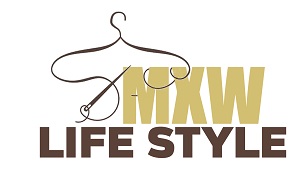In the ever-evolving landscape of beauty and personal care, the shift towards sustainability has become more than just a trend—it’s a necessity. As we step into 2024, the focus on eco-friendly packaging in the cosmetics industry has intensified, driven by consumer demand for more sustainable options and the industry’s recognition of its environmental responsibilities.
This essential guide to eco-friendly packaging for cosmetics in 2024 aims to highlight the innovative approaches and materials that are setting new standards for sustainability in beauty.
The Rise of Eco-Friendly Packaging
The cosmetics industry, historically known for its lavish and often excessive packaging, is undergoing a significant transformation. The shift towards eco-friendly packaging is propelled by a growing awareness of the environmental impact of packaging waste, particularly single-use plastics that dominate landfills and oceans. As consumer demand for products that reflect their environmental principles grows, brands are being encouraged to overhaul their packaging approaches.
Innovations in Sustainable Packaging Materials
One of the most exciting developments in eco-friendly cosmetic packaging is the innovation in sustainable materials.
Here are some of the key materials making waves in 2024:
l Biodegradable Plastics: Made from natural materials such as corn starch, these plastics break down more quickly than traditional plastics, reducing their impact on the environment.
l Recycled Materials: Using post-consumer recycled (PCR) materials for packaging not only reduces waste but also conserves resources. Many brands are now boasting packaging made from 100% recycled materials.
l Plantable Packaging: A novel approach where the packaging, embedded with seeds, can be planted after use, growing into flowers or herbs. This not only eliminates waste but also contributes positively to the environment.
l Refillable Systems: Encouraging consumers to reuse packaging by offering refill options for products like shampoos, conditioners, and creams. This approach significantly reduces the need for new packaging.
The Benefits of Eco-Friendly Packaging
The shift towards sustainable packaging offers numerous benefits, both environmental and economic. Environmentally, it reduces the volume of waste sent to landfills, lowers carbon emissions associated with the production of new packaging, and conserves natural resources. Economically, it can enhance brand image, meet consumer demand for sustainable products, and potentially reduce packaging costs through the use of innovative, less expensive materials.
Challenges and Considerations
Despite the clear benefits, the transition to eco-friendly packaging presents challenges. The cost of sustainable materials can be higher than traditional options, impacting the final product price. Additionally, the durability and functionality of eco-friendly materials can vary, potentially affecting product quality or shelf life. Brands must carefully balance these factors to ensure their sustainable packaging solutions meet both environmental goals and consumer expectations.
Looking Ahead: The Future of Sustainable Cosmetic Packaging
As we look towards the future, the trend towards sustainable packaging is expected to grow, driven by technological advancements, regulatory changes, and continued consumer demand. Brands that invest in eco-friendly packaging innovations are likely to find themselves at a competitive advantage, appealing to a growing segment of environmentally conscious consumers.
Conclusion
The essential guide to eco-friendly packaging for cosmetics in 2024 underscores the industry’s commitment to sustainability. Through innovative materials and designs, the cosmetics industry is poised to make a significant impact on reducing packaging waste and promoting a more sustainable future.
As consumers continue to prioritize environmental values in their purchasing decisions, eco-friendly packaging will remain a key focus for brands aiming to lead in the beauty and personal care market.
Related posts
Recent Posts
Advertisement



